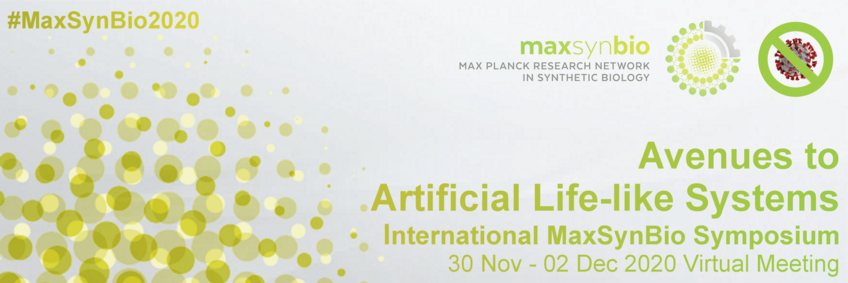
#17 - Building membrane machines to endocytize living bacteria: the battle between adhesion and flexibility
Nina Kostina (DWI-Leibniz Institute for Interactive Materials)
Tuesday, 01 Dec 21:15 - 22:00 CET
Access to the BigBlueButton rooom for this Mini Talk via the lists for Monday and Tuesday.
Please make yourself familiar with BigBlueButton before you join the Mini Talk - read the instructions.
Abstract
Title: Building membrane machines to endocytize living bacteria: the battle between adhesion and flexibility
Author(s): Nina Yu. Kostinaa, Dominik Södera, Anton Josepha, Anna M. Wagnera, Tamas Harasztia, Virgil Percecb, Cesar Rodriguez-Emmeneggera
Affiliations: aDWI-Leibniz Institute for Interactive Materials, Aachen; bUniversity of Pennsylvania, Philadelphia
Abstract: Bacterial and viral invasion into host cells depends critically on their engulfment by the plasma membrane. In cells this process, termed endocytosis, is usually active, i.e., involving components of the cell machinery, starting by receptor−ligand engagement that triggers a series of energy-driven processes that curve cell membrane culminating in the engulfment into an endosome that is released to the cytoplasm. Since such evolved complex mechanisms yet cannot be replayed by synthetic systems, in this work we undertake the challenge of building synthetic cell membrane-model capable of a rudimentary form of endocytosis of bacteria to address the question: What are the minimal requirements necessary for endocytosis of a bacteria? Theoretical studies predict that the endocytosis of prolate micro-objects is possible without the need of active cell machinery if the energy released upon bacterial adhesion to the membrane surpasses the energy required to bend the membrane. However, current widely accepted cell membrane mimics such as liposomes and polymersomes fail to sufficiently recapitulate membrane properties to perform such complex function. Here we report the engulfment of living bacteria into endosomes by cell-like dendrimersomes (DSs) assembled from Janus dendrimers (JDs). The biggest advantage of this synthetic system is that the key properties of the DSs can be programmed into the molecular structures of their building blocks. The mechanism of engulfment included the following steps: adhesion, invagination, formation of a constriction, and release of an endosome. Full engulfment occurred in less than a minute after contact with E. coli. The process was driven by the adhesion of the bacterium to the DSs’ membrane by ultraweak interactions, comparable to those utilized by nature. The key to success relies on the combination of high flexibility and stability of the DSs. The ability to support endocytosis highlights opportunities for the design and programming of DSs in biomedical research.